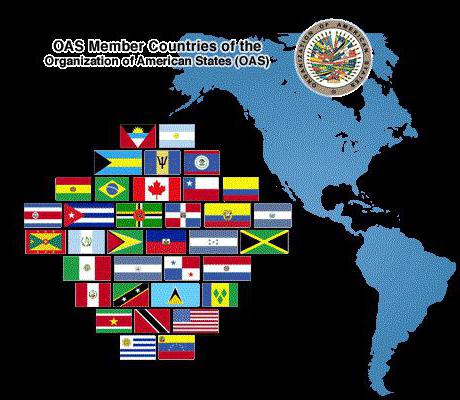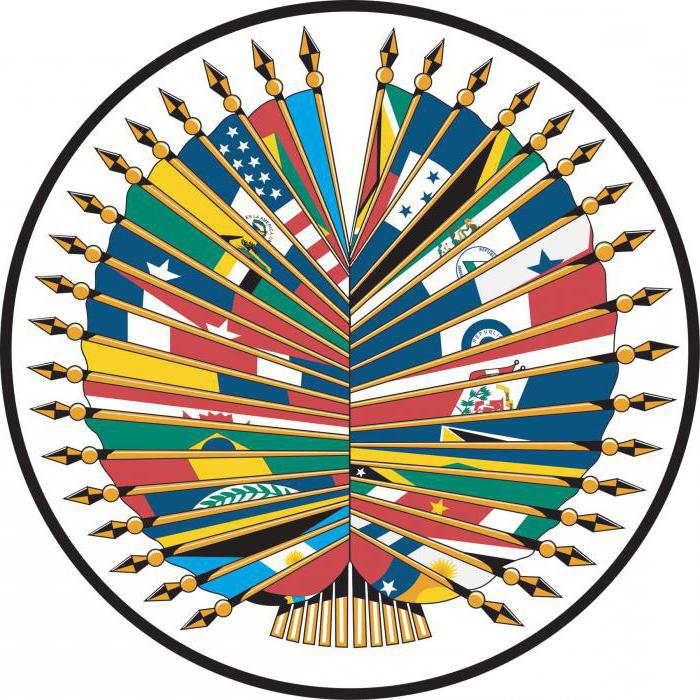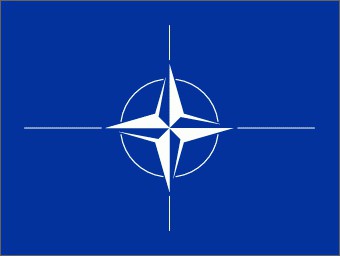Organization of American States (OAS)
To the largest international organizations todayit is permissible to rank OAS. The association, called the Organization of American States, has clear goals and principles of its activities, an officially approved Charter, an extensive structure and an impressive number of member states. Our task will be to get acquainted with the above.
What is OAS
Organization of American States (Eng. Organization of American states, fr. Organisation des États américains, Ex. Organización de los estados americanos, port. Organização dos Estados Americanos), OAS (OAS) is an international associationState, formed in 1948 at the 9th Inter-American Conference in the Colombian city of Bogotá. Its base was the Pan-American Union (1889), an advisory association of several American republics.

In the OAS 35 (33 at the present time)member countries. Working languages four - English, Portuguese, Spanish and French. The governing body of the organization is the General Assembly. The headquarters of the association is located in the US - Washington.
The formation of an organization of American states. OAS: history
The OAS in the form of the Pan-American Union began itswork in 1889 - with the First American International Conference, held in Washington. It was then that the base for its institutions and provisions was prepared, and the foundation of this association was approved. The year of establishment of the Organization of American States is 1948 - the year of signing its Charter. He entered into force in 1951.
For most of the member countries,the practice of joining the OAS immediately after receiving or winning independence. The exception were Canada (1990) and Guyana (1991). The latter became the last country adopted for today in this American union.
Before 1962 Cuba was considered to be a full member of the OAS, but after choosing its path of socialism, the General Assembly, in order to ensure the security of its members, decided to exclude this state from among its participants. The Organization of American Countries also obliged its members to break all diplomatic relations with Cuba, although some of them voted against it. Only on July 3, 2009, the suspension of the country's participation in the OAS was abolished, but the Cuban government did not hurry to decide to return to the union.

In 1971 it was decided to introduce the OAS observer institution. In 2015, this status has already 70 states, including the Russian Federation. At present, the credibility and position of the Organization of American States substantially weakened the purely Latin American associations without the participation of the United States - UNASUR (Union of South American Nations), CELAC (Community of Latin American and Caribbean States).
In April 2017, the President of Venezuela, Nicolas Maduro, sent a message to the General Secretariat of the OAS, in which he said that his State immediately left the Union.
The member countries of the association
So, who is included in the Organization of American States:
- USA;
- Dominica;
- Peru;
- Uruguay;
- Barbados;
- Honduras;
- Antigua and Barbuda;
- Mexico;
- Salvador;
- Paraguay;
- Guyana;
- Trinidad, Tobago;
- Saint Lucia;
- Colombia;
- Nicaragua;
- Bolivia;
- Suriname;
- Panama;
- Chile;
- Saint Vincent, the Grenadines;
- Costa Rica;
- Dominican Republic;
- Guatemala;
- Saint Kitts, Nevis;
- Bahamas;
- Argentina;
- Belize;
- Canada;
- Ecuador;
- Grenada;
- Mexico;
- Brazil;
- Jamaica.
Previously, the Union also included Cuba and Venezuela.
Objectives of the OAS
The purposes of the Organization of American States, based on the Charter, are as follows:
- Strengthening peace and security in the two American continents.
- The primary observance of the principle of non-interference, the strengthening of representative democratic power in the participating countries.
- To contribute to the peaceful resolution of disputes between member countries, and also to prevent the possible maturation of conflicts.
- Unite your forces in case of external aggression.
- To contribute to solving a number of problems of participating countries - economic, social, legal.
- Promote overall social, cultural and economic development.
- Make the direction of its development a limitation in the number of weapons, putting all resources on social and economic development.

Basic principles of the Union
The establishment of the Organization of American States implied strict observance by its participants of a number of principles:
- The norm of interaction between participants is international law.
- Relations between participating countries are built onrespect for the rights of the sovereignty of states and individuals of their citizens, and also on the basis of strict observance of the obligations prescribed by international treaties.
- Relations between OAS members are based on the principles of goodwill and mutual trust.
- Each participating State should, with its main objective, choose an effective representative democracy.
- Cooperation between the OAS countries is based on the principles of non-interference in each other's policies, the independence of state systems.
- The participating countries oppose aggressive wars.
- Aggression against one member state is regarded as aggression against the entire OAS.
- All disputes between participants should be resolved only peacefully.
- Economic cooperation should lead to the common welfare of citizens of member countries.
- The basis of peace is social security and justice.
- The personal rights of all citizens are equal - regardless of their gender, race or age.
- Spiritual unity of OAS countries is based on mutual respect of each other's national cultures, aspiration to high ideals of universal human culture.
- The work of the educational institutions of the OAS states should be based on the promotion of universal peace, freedom and equality.

Structure of the OAS
The Organization of American States (OAS) carries out its objectives with the following hierarchy of bodies:
- General Assembly;
- a consultative advisory body of foreign ministers of the participating States;
- Advice;
- Inter-American Committee on Legal Affairs;
- a special Inter-American Commission on Human Rights;
- General Secretariat;
- specialized institutions and conferences.
It is possible to create additional auxiliary institutions and bodies on specific issues.
Charter of the Organization of American States
The Charter of the OAS was adopted on 30.04.1948 in Bogota (Colombia). It consists of 3 parts, 23 chapters and 151 articles. Its structure is as follows:
- Part 1:
- The nature of the document, the enumeration of the main objectives of the organization.
- Principles of the OAS.
- Provisions relating to members of the organization.
- Disclosure of the concept of "all-round development" within the framework of this union of states.
- Part 2:
- Structure of the organization.
- Regulations on the General Assembly.
- Principles of the work of the Consultative Meeting of Ministers of the Interior.
- Councils of the organization: general provisions; Articles dealing with the work of the Permanent Council.
- Inter-American Social and Economic Council.
- Council on Education, Science and Culture.
- The Legal Committee of the Organization of American States.
- Commission on Human Rights.
- General Secretariat.
- Articles about specialized conferences.
- Points about specialized institutions.
- Part 3:
- Different provisions of the document.
- Ratification and time of action.
- Enumeration of provisional regulations.

We will discuss the important provisions of the agreement in more detail.
About the General Assembly
The General Assembly was recognized as the supreme governing body of the Organization of American States. It performs a number of important functions within the structure:
- Defines the general activity vectors and policies of the entire system.
- Considers all matters relating to the relationship between members.
- Coordinates the activities of all subordinate bodies and institutions.
- Strengthens and develops cooperation with the UN.
- Actively promote cooperation with other international organizations in the social, economic and cultural spheres, giving preference to alliances with similar goals.
- Approves the budget program of the Organization of American States, sets the size of the quotas of participants.
- He listens to all the annual reports and reports of the bodies and institutions under their control.
- Adopts the general rules on which the General Secretariat operates.
- Adopts its entire regulations and 2/3 of the agenda.

Absolutely all OAS countries are represented in theThe General Assembly; each has the right to only one vote. This Supreme Council meets annually in a city that is chosen on the principle of alternation. All resolutions are approved by a large number of votes. Exception - the projects prescribed in the Charter, for the adoption of which you need 2/3 "for".
About OAS members
Here are the most significant provisions on the members of the Organization of American States:
- Entrance to the association is open to any American country or union of states willing to accept all the obligations of the Charter and to ratify it.
- The decision to adopt a new member is determined by the vote of all participants - a positive verdict requires 2/3 of the votes.
- All states belonging to the OAS have equal rights and responsibilities.
- Each of the participants should not be limited in the original way of development of their political, economic and social life.
- None of the members has the right even to indirectly interfere in the internal affairs of another.
- The territory of each of the member states is inviolable.
- All disputes are resolved only by peaceful means - arbitration, conciliation, direct negotiations, judicial procedure, etc.
- If the inviolability and integrity of one or more participating States is violated, other OAS members must stand up for his / their sovereignty.

Disclosure of the concept of "all-round development" within the framework of the OAS
The comprehensive development of the members of the Organization of American States (OAS), as stipulated in its Charter, means the following:
- Constant increase in GDP, fairdistribution of national income, adequate tax systems, modernization of agriculture, stable prices, fair wages, the introduction of modern achievements in medicine, the creation of a decent standard of living for the population, and so on.
- Granting access to world markets to their regions, creating favorable conditions for concluding international business agreements, expanding opportunities for exports, etc.
- Respect for the personal rights of its citizens,providing them with economic stability, social security, freedom of spiritual development; creation of a legal system that protects the rights of every citizen without exception; the creation of trade unions; provision of universal primary and secondary education and free access to higher education, etc.
OAS is one of the oldest Americaninternational associations. The organization unites for today 33 countries, has a ramified structure, its own Charter with clearly defined goals and principles of activity.







